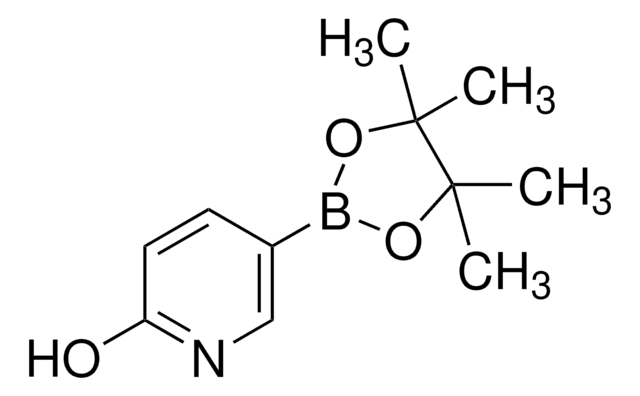749257
2,2′-Bis[4-(trifluoromethyl)phenyl]-5,5′-bithiazole
97%
About This Item
Recommended Products
Assay
97%
form
powder or crystals
mp
230-235 °C
semiconductor properties
N-type (mobility=1.83 cm2/V·s)
SMILES string
FC(F)(F)c1ccc(cc1)-c2ncc(s2)-c3cnc(s3)-c4ccc(cc4)C(F)(F)F
InChI
1S/C20H10F6N2S2/c21-19(22,23)13-5-1-11(2-6-13)17-27-9-15(29-17)16-10-28-18(30-16)12-3-7-14(8-4-12)20(24,25)26/h1-10H
InChI key
YPPDUFZJMJWOLJ-UHFFFAOYSA-N
Application
Signal Word
Danger
Hazard Statements
Precautionary Statements
Hazard Classifications
Acute Tox. 3 Oral - Eye Irrit. 2
Storage Class Code
6.1C - Combustible acute toxic Cat.3 / toxic compounds or compounds which causing chronic effects
WGK
WGK 3
Flash Point(F)
Not applicable
Flash Point(C)
Not applicable
Certificates of Analysis (COA)
Search for Certificates of Analysis (COA) by entering the products Lot/Batch Number. Lot and Batch Numbers can be found on a product’s label following the words ‘Lot’ or ‘Batch’.
Already Own This Product?
Find documentation for the products that you have recently purchased in the Document Library.
Articles
Intrinsically stretchable active layers for organic field-effect transistors (OFET) are discussed. Polymer structural modification & post-polymerization modifications are 2 methods to achieve this.
Fabrication procedure of organic field effect transistor device using a soluble pentacene precursor.
Solution-processed organic photovoltaic devices (OPVs) have emerged as a promising clean energy generating technology due to their ease of fabrication, potential to enable low-cost manufacturing via printing or coating techniques, and ability to be incorporated onto light weight, flexible substrates.
Thin, lightweight, and flexible electronic devices meet widespread demand for scalable, portable, and robust technology.
Our team of scientists has experience in all areas of research including Life Science, Material Science, Chemical Synthesis, Chromatography, Analytical and many others.
Contact Technical Service







